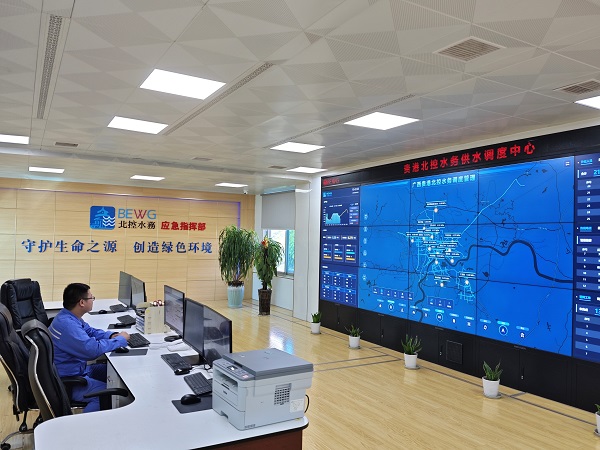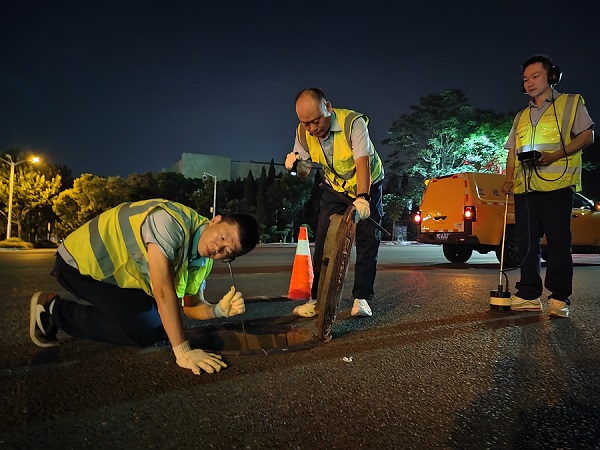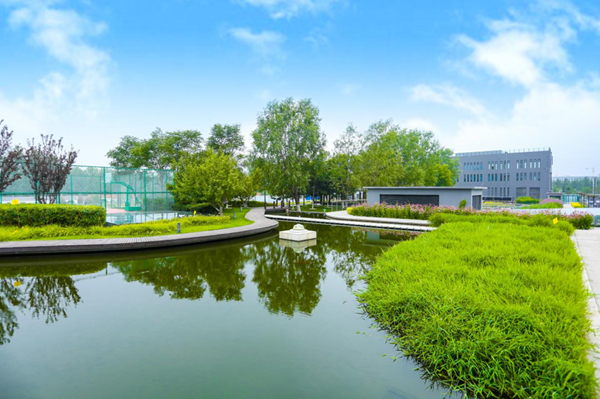-
Practice
-
Target
-
Data
Efficient Utilisation of Water Resources
Based on relevant water resource management policies and regulations such as the Water Law of the People's Republic of China and the Opinions of the State Council on Implementing the Strictest Water Resources Management System, the Group has formulated the Measures for Water Resources Management of BEWG12 to strengthen water resource management and comprehensively improve water resource utilisation efficiency. For water-related projects within the Group, the Group scientifically manages the entire process of water resource development, utilisation, and protection, adhering to the principle of giving equal importance to increasing water sources and reducing consumption, strengthening the conservation, protection, and scientific utilisation of water resources, and striving to build a water-saving water enterprise.
The Group's Chief Executive Officer is responsible for the overall strategy of the Group, including water resource management strategy and performance. This encompasses setting the strategic direction for water resource management issues and reviewing the progress made in achieving production water management targets.
We have established a three-level water resource management mechanism including the Group headquarter, four major business regions, and subsidiary enterprises, and formed a steering group to oversee and promote the implementation of water resource management-related work. The steering group is mainly responsible for formulating the Group's water resource management rules and systems, implementing responsibilities, and supervising execution; working with relevant departments to formulate water intake targets, water consumption targets, and tracking the target progress, formulating annual plans for water resource management actions to achieve targets, and target adjustments and reporting.
Under the premise of ensuring water quality safety and excellence, BEWG strengthens water resource management from the source and actively explores the utilisation of alternative water sources.
- We strengthen self-use water management, promoting separate metering of different water use processes in areas such as water treatment plants and office buildings, conducting water quantity analysis, and further controlling self-use water quantities.
- We continuously optimise production process technologies, upgrade existing technologies, and promote the research, development, and application of new technologies to achieve efficient utilisation of water sources.
- Strengthen the reuse of water resources in processes, such as optimising the collection of supernatant from reuse water tanks and sludge discharge strategies to improve the collection rates of sludge water and backwash water.
- We install reclaimed water reuse systems in newly built water treatment plants and encourage the addition of reclaimed water reuse systems in old water treatment plants, stipulating the priority use of reclaimed water in equipment flushing, plant greening, and other processes.
Development of Alternative Water Sources
The Group attaches great importance to the development and utilisation of unconventional water sources. Based on our own business characteristics, we are committed to improving the recycling efficiency of reclaimed water within sewage treatment plants and actively expanding the application of reclaimed water in multiple fields such as industrial production, ecological replenishment, and municipal water use. By exploring and practicing the utilisation of reclaimed water, rainwater, flood water, and seawater, the Group promotes the recycling of reclaimed water resources, increases water supply, alleviates water shortage conflicts, continuously improves the efficiency of internal and external water resource recycling, and forms a sustainable water cycle system.
To effectively promote the improvement of the Group's water resource utilisation efficiency, we formulate production water management goals and monitor the annual progress of goal progress.
Production Water Management Goals
- Water supply plants:
^ The self-use water ratio for plants that engage in process water reclamation should be ≤ 1%^ The self-use water ratio for plants that do not engage in process water reclamation should be ≤3%
- Sewage treatment plants:
^The proportion of production water* ≤5%*Refers to the amount of tap water and reclaimed water used in the production process.
Achievements of production water management goals in 2024
- Water supply plants: The self-use water ratio in the Group decreased from 1.40% in 2023 to 1.39% in 2024, marking an 1% year-on-year decrease. All water supply plants achieved the production water management goals.
- Sewage treatment plants: The proportion of water used in the production of the Group's sewage plant is controlled to 3%.
| Fresh Water Consumption of BEWG in 2024 | ||
| Indicator | Data | Unit |
| The Chinese mainland water treatment business | 3,711,548 | m3 |
| Overseas water treatment business | 743 | m3 |
| Solid waste business | 1,146,540 | m3 |
| Office building | 45,947 | m3 |
| Total fresh water consumption | 4,904,778 | m3 |
| Fresh water density * | 2.02 | m3/10,000 RMB |
| The Consumption and Ratio of Self-use Water by the Water Supply Plants of BEWG in 2024 | ||
| Indicator | Data | Unit |
| Self-use water consumption | 22,063,448 | m3 |
| Self-use water ratio | 1.4 | % |
| The Consumption and Proportion of Reclaimed Water by the Sewage Treatment Plants of BEWG in 2024 | ||
| Indicator | Data | Unit |
| Reclaimed water consumption | 135,940,317 | m3 |
| Proportion of reclaimed water in production water * | 97.34 | % |











